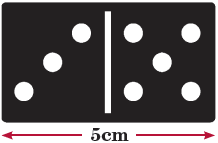Measurement
A measurement is the number assigned to an attribute of an object or event that allows for a comparison between different objects and events. Examples include the numbers used to describe length, volume, capacity, mass, weight and more. Measurements have long been necessary for trade, science, technology, and quantitative research.
Example
The attribute that is being measured in the image below is length.

The unit of length in this case is centimeters. This measurement, like all other measurements, is approximate. For every unit of measurement, there is always a smaller, more precise unit that could be used.
There are many other kinds of measurements. Some of these are area, time, temperature, and angle.
Many different measurement systems have been used over the course of history. Some of the earliest based measurements on things that most people would have access to, for example, people's feet and thumbs. Unsurprisingly, this lead to lots of variation in units of measurement.
Today, most units of measurement are very strictly defined, and there is a strong push for standardization throughout the world. This is one of the goals of the International System of Units (SI), the current global standard of measurement. It is used virtually everywhere in the world. Even in countries that haven't fully adopted it, such as the United States, it is still widely used in specific areas such as research, industry, the military, governmnent, and more.
For everyday use however, the United States still largely uses the US customary system of measurement, which is based on the imperial system. The imperial system is still used in the United Kingdom to an extent, along with SI.
